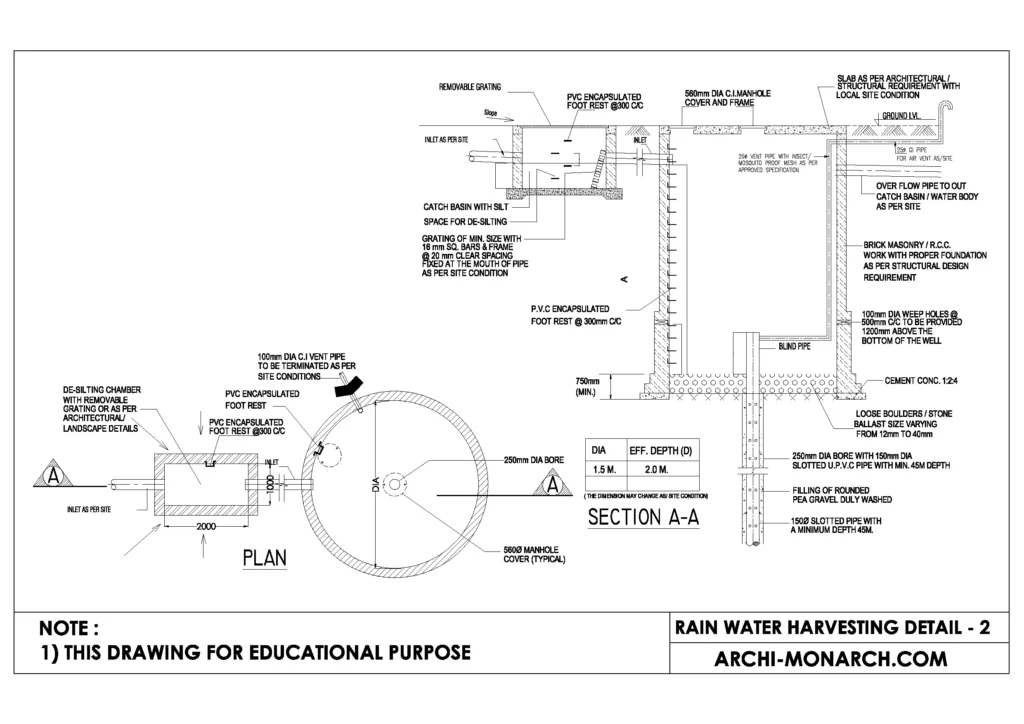Rain-water harvesting is the collection, storage, and distribution of rainwater for reuse. This can be done through a variety of methods, such as using rain barrels or cisterns to collect water from rooftops, or by diverting water from gutters and downspouts into underground storage tanks.
The collected water can then be used for irrigation, flushing toilets, or even for drinking if it is properly treated. Rainwater harvesting is a sustainable practice that can help conserve water resources and reduce the strain on municipal water systems.
If you want to know about the staircase detail or ramp detail or landscape detail, please click the link.
Image of rainwater harvesting detail and downloadable (in DWG) link below

Rain-water harvesting detail drawing – 2
A rainwater harvesting system typically includes the following components:
- Roof catchment area: The area of the roof from which the rainwater is collected, typically via gutters and downspouts.
- Gutter and downspout system: The gutter collects the rainwater from the roof and directs it to the downspout, which carries the water to the storage tank.
- Storage tank: The tank where the collected rainwater is stored. The tank can be made of a variety of materials, such as concrete, plastic, or metal, and can be above or below ground.
- First flush diverter: A device that diverts the initial flow of water, which is typically the dirtiest, away from the storage tank.
- Pump: A pump is used to move the water from the storage tank to where it will be used.
- Filtration system: A filtration system is used to remove debris and other contaminants from the water before it is used.
- Distribution system: The system that delivers the treated water to where it will be used, such as a drip irrigation system or a hose.
- Overflow system: A system in place to ensure that the excess water is drained safely and not to cause any flood
These are the basic components of a rainwater harvesting system. Additional components may be added depending on the specific application and the desired end use of the collected water. A detailed drawing of a rainwater harvesting system should include all of the above components and their specific locations and connections.
Our tips to help you improve your architectural rainwater harvesting detailing.
